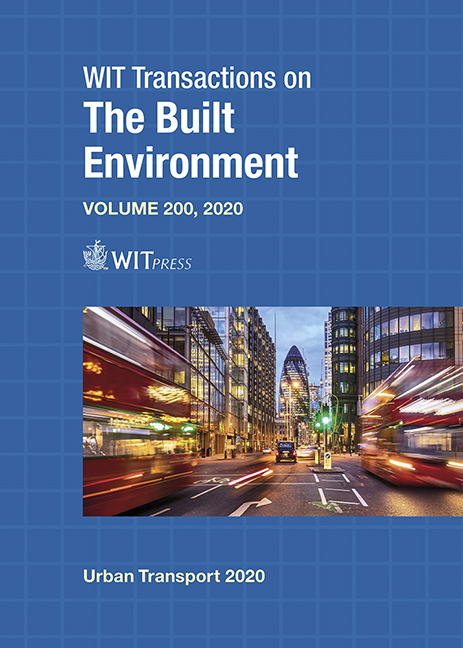PUBLIC TRANSPORT NETWORK AS A DEFINING PART IN A METROPOLITAN SYSTEM OF OPEN SPACES: METRO LINE 2 OF LIMA METROPOLITANA, PERU
Price
Free (open access)
Transaction
Volume
200
Pages
13
Page Range
61 - 73
Published
2020
Paper DOI
10.2495/UT200061
Copyright
WIT Press
Author(s)
SUSANA LÓPEZ VARELA, JOAN MORENO SANZ
Abstract
Urban mobility is a key issue in sustainable urban development policies. However, in the last few decades, the rise of urban traffic has aggravated environmental quality, spatial fragmentation, and social cohesion in metropolitan areas. Meeting commuter’s needs should not be contrary to improving the quality of the environment. Public politics based on an integrated spatial planning of urban mobility and the urban fabric, following environmental principles, would contribute to make an accessible system of public spaces. The main goal of this research is to assess how a mass transport network could become the backbone of a metropolitan public space system. Integrated planning of public transport and open space system could contribute to improve indicators related to urban mobility, environmental quality and social inclusion, in unstructured environments and socially vulnerable communities. This scientific–analytic research is focused on three variables: urban mobility, urban morphology and social inclusion, and their quantitative and qualitative indicators (traffic flows, land-use patterns, air pollution, socio-economic status, public space area per capita, etc.). These indicators are tested in Metro Line 2 of Lima, currently under construction. Lima Metropolitana is one of the largest Latin-American conurbations with a population of just over 9.5 million and 22 million commuters daily. Moreover, traffic congestion is considered by residents as the city’s second most important problem, despite which 75% of trips take place daily on public transport. An urban model based on unbalanced urban densities and no mixed land-use patterns, and informal transport services undermines the creation of a metropolitan open space system. An integrated spatial planning based on mobility and public space improving the future exchange nodes of Metro Line from a spatial and social point of view could contribute to reducing the impacts of urban flows, such as spatial fragmentation, social inequality and environmental pollution.
Keywords
public transport network, metropolitan open space system, Lima Metropolitana





